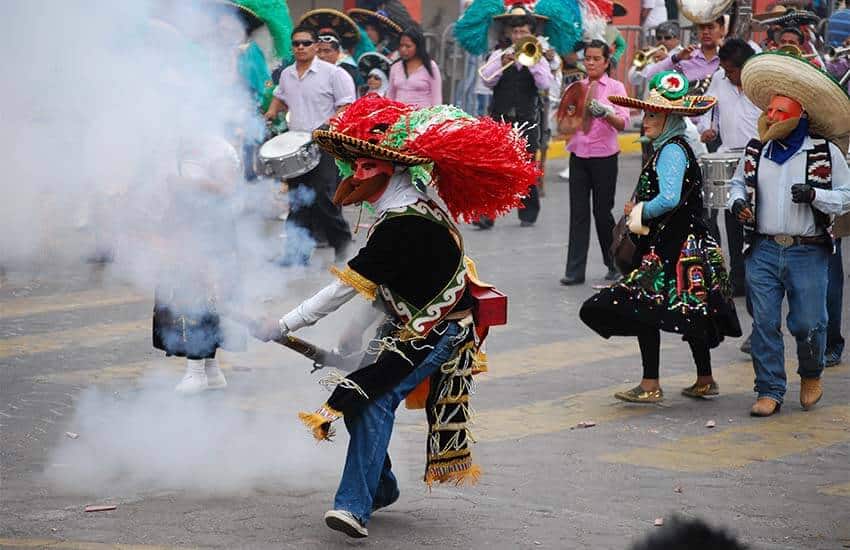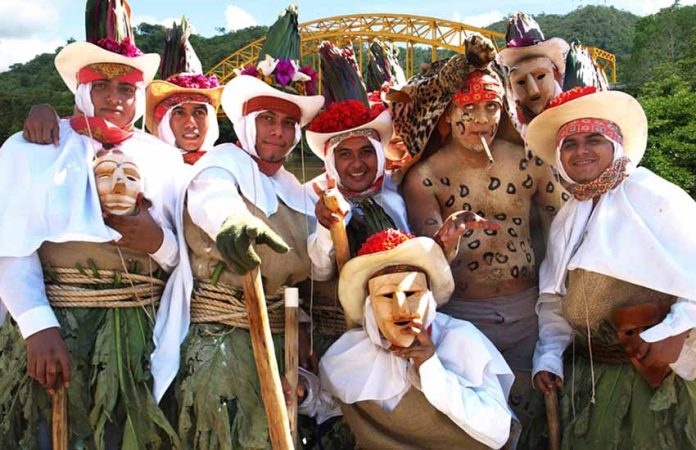Mexico has one kind of carnival celebration, similar to what you’d see elsewhere in the world, but another kind is uniquely Mexican.
Are you looking for an experience similar to those in New Orleans or Rio de Janeiro? Head to Mexico’s coasts: notable celebrations from Veracruz to the Yucatán Peninsula on the Gulf of Mexico side and in Mazatlán and Baja California on the Pacific side will satisfy your need for glitz, large parades and a massive party atmosphere. But there are others too, Mexico’s more “authentic” carnivals, celebrations that often feature a rural, indigenous flavor.
Now, even Mexico’s biggest, glitziest celebrations are still way smaller than many carnival celebrations in the Old World and New. Why is that?
The conquistadors introduced the tradition along with all its other folk religious celebrations in the early colonial period. Most of these were adopted and shaped one way or another by rural and urban populations, but the popularity of carnival became something of a headache for the colonial masters.
Carnival is a time to set aside social conventions, including subservience to crown and church. Masks and costumes provided anonymity and allowed the disenfranchised to make fun of norms and the authorities themselves.

This would not do, so campaigns to stamp it out began in the 17th century. By the 18th, it was mostly eliminated in the cities, where enforcement was strongest, but not so much in isolated rural communities.
With the country’s independence in the 19th century, there were initially no efforts to bring it back. Many religious folk festivals were frowned upon by Mexico’s Liberal movements eager to banish the colonial past.
Yet, remnants of carnival, mostly as balls for the rich, survived. It eventually experienced a comeback in coastal cities, probably due to contact with other countries with more robust traditions.
Mazatlán was first to reestablish carnival in 1898, taking an annual mock battle between dock and warehouse workers and shifting the focus to colorful costumes to keep the violence down.
However, the idea of a simulated battle never really disappeared: throwing projectiles such as empty eggshells filled with confetti and spray foam are still an integral part of celebrations.
These modern coastal carnival celebrations have what you would expect: large parades, extravagant costumes, queens (and sometimes kings) and lots of partying, as well as the same problems — alcohol-fueled public disturbances and overt sexuality that has sometimes caused controversy.

To counter some of this, versions for children have been created.
Besides Mazatlán, the largest, most important coastal carnivals take place in Veracruz city (the second largest), Ensenada, La Paz. Mérida, Cozumel, and Campeche city. They continue to grow more popular on both coasts as more communities sponsor them, looking for a slice of the domestic tourism they generate.
But such carnivals have not taken off in the interior cities, not even Mexico City. Masks, costumes and social rule-bending abound in these other celebrations too, but that’s pretty much all they have in common with their coastal cousins.
These other celebrations can be found in about 225 central and southern Mexican communities, where Catholicism was introduced before the religious feast was purged. These events are very local, with traditions distinct to each town or small region. Local dances and musical styles (especially with wind instruments) dominate. They may involve bullfighting, charreada (rodeo), horse racing, story reenactments and even fishing tournaments.
Indigenous influence can be seen in many of these celebrations, especially in the dances. In the center of the country, they often include the huehues, literally “old men,” as well as adapted rituals meant to ensure good crops for the upcoming growing season. Costumes are influenced by local traditions, with bull-themed ones in Veracruz and monkey-themed ones in Chiapas.
The largest and best-known of these carnivals is that in Huejotzingo, Puebla, where just about the entire town participates. This celebration, which starts on the Saturday before Ash Wednesday, mostly revolves around a “reenactment” of the 1862 Battle of Puebla.
The residents of the four oldest neighborhoods are given roles: two represent the invaders — the French (known as zuavos or zapadores) and the turcos (Turkish mercenaries) — and the other two the Mexican defenders, known as the zacapoaxtlas and the indios.
It is not historically accurate by any means but rather consists of a large number of mostly men (women were permitted to participate only somewhat recently) running around in garish costumes with fake rifles that explode real gunpowder. Alcohol figures in here as well, so accidents can and do happen. It all makes for a wildly chaotic scene with smoke and noise filling the air for three days and nights.
In Mexico City, carnival has and has not disappeared. Yes, there are small celebrations of the rural type to be found, but that is because until the 20th century, areas like Santa Martha Acatitla, Santa Cruz Meyehualco and San Lorenzo Tezonco were isolated rural areas. Now that these are urban areas, elements of modern carnival celebrations have crept in, especially in the costuming, the addition of carnival royalty and the musical choices.
Whichever your preference, attending a carnival celebration in Mexico is highly recommended; just keep your head and, as always, stay safe.
Leigh Thelmadatter arrived in Mexico 18 years ago and fell in love with the land and the culture in particular its handcrafts and art. She is the author of Mexican Cartonería: Paper, Paste and Fiesta (Schiffer 2019). Her culture column appears regularly on Mexico News Daily.
